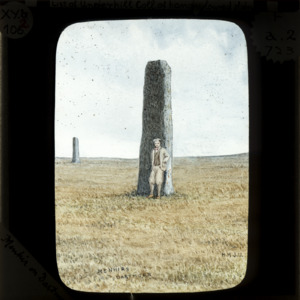Henry Underhill facts for kids
Quick facts for kids
H.J.M. Underhill
|
|
|---|---|
| Born | 1855 7 High Street, Oxford, England
|
| Died | 2 October 1920 Oxford, England
|
| Burial place | Wolvercote Cemetery |
| Other names | Henry Michael John Underhill |
| Occupation | Photographer, lecturer, grocer |
| Known for | Magic lantern lectures |
|
Notable work
|
The Age and Distribution of Folk Tales (inaugural lecture, 1893) |
Henry Michael John Underhill (1855–1920) was a talented amateur scientist, artist, and photographer from Oxford, England. He also ran a grocery store!
He is most famous for his amazing hand-painted and photographic lantern slides. These slides showed all sorts of cool things, like insects, nature, ancient British history, and old folk tales. Underhill also helped start the Oxfordshire Natural History Society, which is now called the Ashmolean Natural History Society of Oxfordshire.
Contents
Early Life and Helping Others
Underhill was born in Oxford in 1855. He went to Christ Church Cathedral School. He also had private art lessons from a famous artist named William Riviere.
After his father passed away in 1896, Underhill took over the family grocery shop. It was located at 7 High Street, Oxford. He ran the shop until he died in 1920.
Underhill spent much of his life helping others. He did a lot of charity work for the George Street Congregational Sunday School. He also helped the Oxford branch of the Band of Hope (now Hope UK). He organized fun trips and entertainment for children from poorer families in the city.
One of his very first magic lantern shows was for the students at the Oxford Ragged School. His grandfather, father, and uncle had all helped create this school. Underhill passed away on October 2, 1920, at 65 years old. He is buried in Wolvercote Cemetery.
Natural History Society and Lectures
Underhill was very active in Oxford's smart community. He helped create the Oxfordshire Natural History Society. He was the society's secretary before becoming its president in 1893.
During the 1880s and 1890s, Underhill gave many lectures to the society. He talked about a wide range of topics. All his talks used his special hand-painted and photographic lantern slides. Some of his lectures included:
- Spiders (1887)
- Insect Eyes (1888)
- Microscopic Organisms from Ponds (1889)
- Artistic Japan (1890)
- Painting Lantern Slides (1891)
- A Holiday in Norway (1892)
Folk Tales and Ancient Stones
As president, Underhill gave a special first lecture called The Age and Distribution of Folk Tales in 1893. This lecture featured lantern slides that showed folk tales from England, Russia, Japan, and Ireland. Today, a collection of over 300 of his folk tale slides is kept by The Folklore Society.
In 1896, Underhill gave a lecture about "Great Stone Circles." This talk was about huge ancient stone monuments in South-West Britain. It included hand-painted lantern slides of famous places like Stonehenge, the Rollright Stones, and Avebury. Important people like archaeologist Arthur Evans and professor Edward Bagnall Poulton attended this lecture.
Underhill also gave a lecture in 1895 called Buried Roman Cities in England. For this, he used photographic slides of North Leigh Roman Villa. These photos are very important for archaeologists today. They show what the villa's mosaic looked like before it was rebuilt in the 1920s.
Photography Work
In 1897, Underhill joined the Oxford Camera Club. He often gave talks to the club, mostly about how camera technology worked.
In 1907, Underhill took part in a project to record old buildings. He photographed windmills in Oxfordshire and Buckinghamshire. These photos are very valuable today because they show buildings that no longer exist. They are now kept at the Oxford University History of Science Museum.
Underhill also took photos of his family, friends, and other society members. These pictures were taken during fun outings in the late 1800s and early 1900s. Some of these photographs have been shown in exhibitions at the Museum of Oxford.


